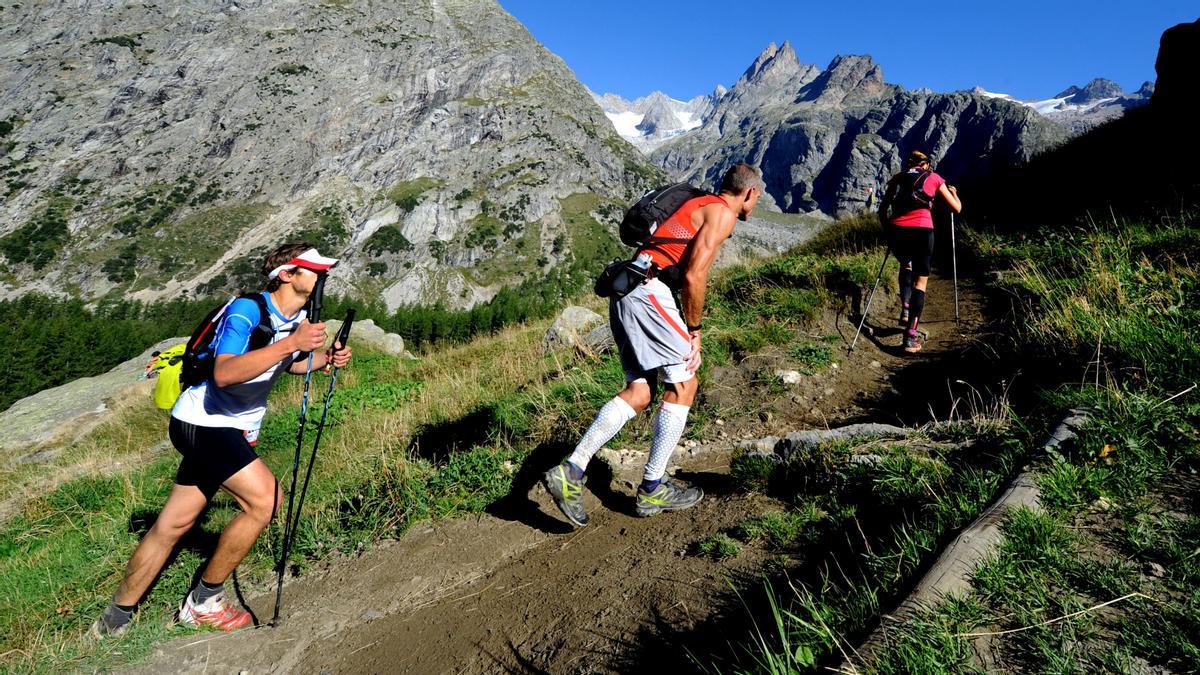He extreme physical exercise, the one who puts the body to the limit, causes chronic inflammation in the body’s tissues that lead to early aging. “Elite sport generates minor muscle damage which, in turn, cause tissue wear. Over the years there may be a premature aging in tendons, muscles and even throughout the body,” explains the researcher Salvador Macip, director of Health Sciences Studies at the UOC and professor of Molecular Medicine at the University of Leicester. Macip is an expert in biological phases of the aging process.
Macip specifies that the “moderate and constant” exercise –the one that does not put the body to the limit and that is opposed to a sedentary life– It is healthy and necessary. Reduces the risk of heart disease and cancer. “Also decreases cellular aging, partly because it has a anti-inflammatory effect. It serves to cleanse the tissues.” However, the same does not happen with extreme sports, those performed by elite athletes and those who begin to practice very intense sports, which can “accelerate” cellular damage and cause “chronic old age problems.”
“Small injuries”
“Very intense sport causes small injuries. When you push your body to the limit, wear and tear occurs,” says this researcher, who clarifies that this also depends a lot on the “type of life” that the athlete later leads. “He maintenance [tras la retirada] It is important because one of the causes of aging is loss of muscle mass”, Add.
How does this aging manifest itself? Or what do we mean when we talk about this process? As Macip explains, aging “is not a single thing.” “You can have perfect skin and terrible muscles,” precise. And not all people age in the same way. “We still do not understand aging well because They are difficult studies to do, since they involve following people for many years. And because we still don’t have good enough aging markers,” recognize. But although “There is still much to know,” Macip assures that there are already “clues” and “indications” that intense sports can be “bad” in the long run, compared to “moderate” sports, which are good.
epigenetic clock
As this researcher explains, the only marker of aging that currently exists is “epigenetic clock.” “Genetics refers to the DNA of cells, while epigenetics refers to the chemical changes of DNA,” says Macip. With age, he continues, there are a series of “epigenetic changes that can be measured.” “There are certain chemical modifications of DNA that occur over the years, and that is what has been called epigenetic clock. There are different types of epigenetic clocks: aging is not homogeneous throughout the body,” he explains.
aging model
High-intensity sport affects genetic expression, as recently revealed by a study by the Sant Pau Research Institute and the Polytechnic University of Catalonia (UPC). “Our studies are focused on how our genes are expressed in different circumstances, what is known as transcriptomics. The expression of our genes varies depending on the things we do and the environment,” he explains. José Manuel Soria, head of the Genomics of Complex Diseases group at the Sant Pau Research Institute. According to him, although people inherit genes that cannot be changed, these they do have “a certain plasticity” and its expression can “adapt” to the conditions of the environment.
This key is what his team has investigated in the field of sports practice. “Elite sport is a good aging model,” Soria assures. His team, thanks to collaborations with the Barcelona Marathon and the handball section of FC Barcelona, has studied how the genes of athletes are expressed up to 48 hours later after having completed the activity. “We have seen that, when we finish a sports activity of such intensitydue to physiological stress, the expression of our genes simulates that we are sick, even though we are not,” he explains.
However, this geneticist assures, Individuals “recover” once 48 hours have passed. That is, they “recover” their health. “We are very interested in this recovery because that is where we can extract information about how they return to normal the physiological pathways that have been altered”, Soria says. Thanks to the study carried out with FC Barcelona players, they have identified three major player profiles: the “fast recoverers” (in a short time they are back to how they were at the beginning); the “slow” (48 hours after the game they still have altered gene expression pathways), and the “adaptable to sport” (the effort has had a “minimal impact” on gene expression. “This opens the door to personalize interventions with players at the training and physiotherapy level,” says Soria.
Thus, the research of the Sant Pau Research Institute has focused on seeing how elite sport is a “good model to study aging”. The alterations that occur in genes of athletes after intense activity are the same as those developed in some pathologies in which the patient, On the contrary, it does not recover. “We are already beginning to have information to intervene and recover these alterations,” says Soria.
An example. His group made a research at Everest Base Camp, at 5,360 meters high, where he studied how climbers adapted to the lack of oxygen. “We have seen that it is something similar to what happens to patients with chronic obstructive pulmonary disease (COPD). These recovery mechanisms in healthy people can give us information about people with COPD, because the hypoxia [trastorno en el que hay una disminución del suministro de oxígeno a un tejido] It also modulates the expression of our genes, although we later recover. We want to see if with COPD the same mechanisms work”, explains this geneticist. The goal is to know What guidelines modulate expression in a healthy way.

